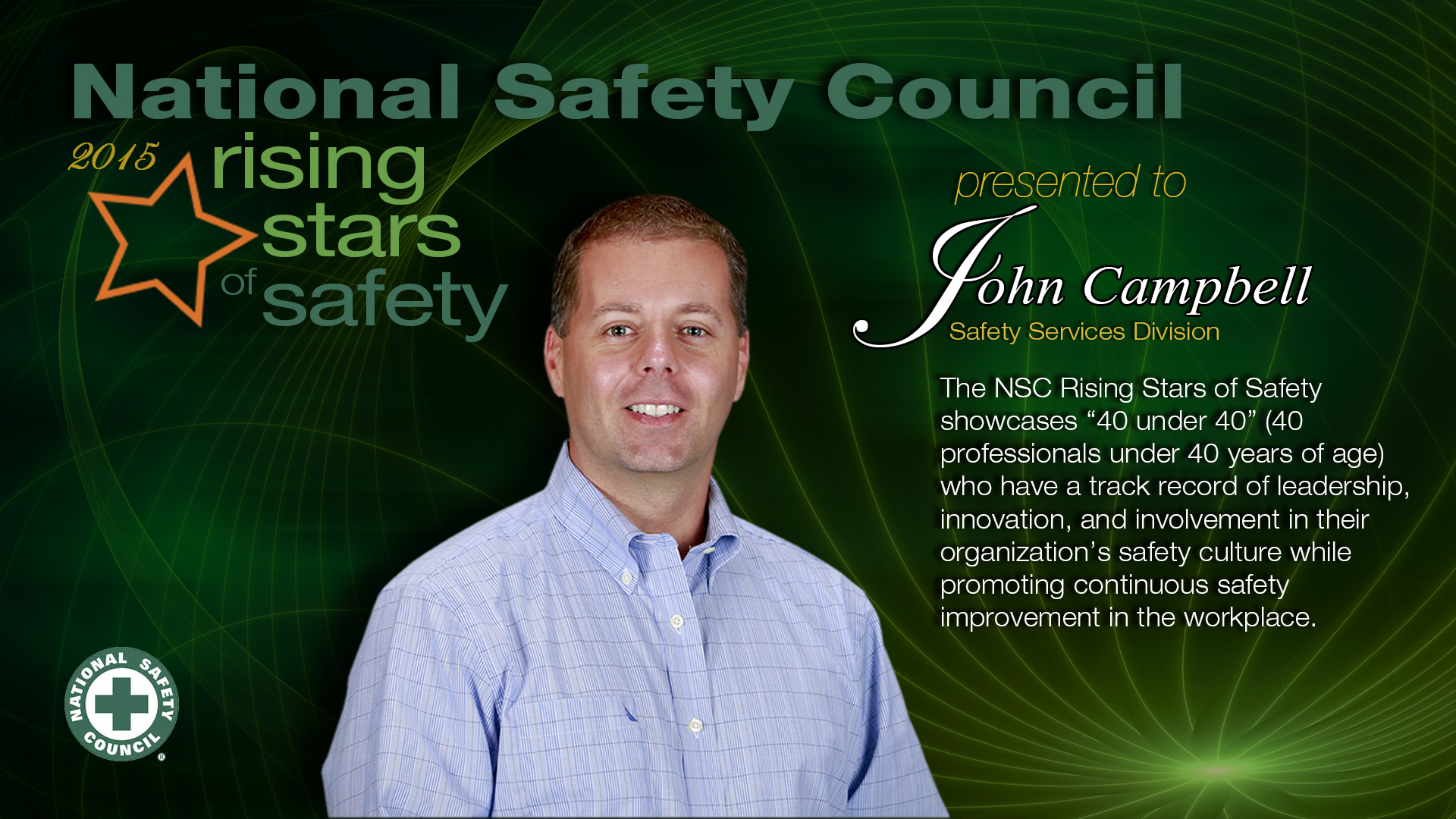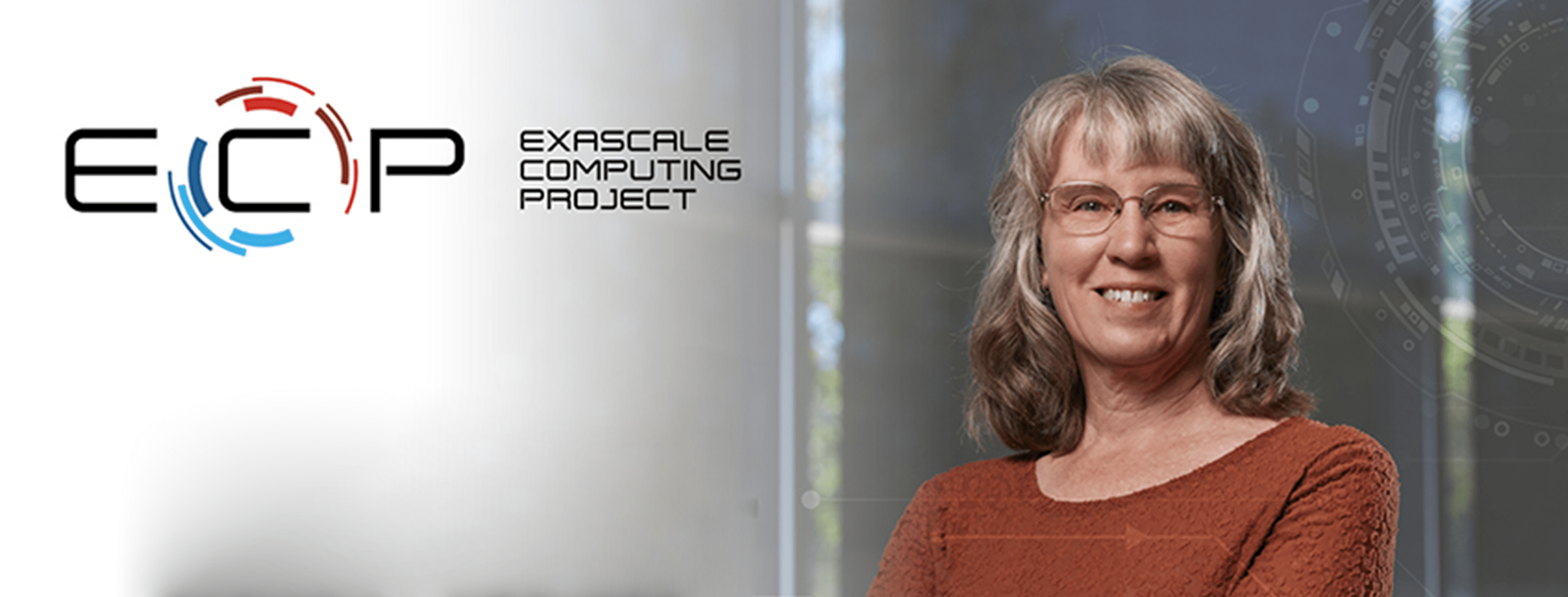
John Campbell, CSP, will be recognized by the National Safety Council as one of its Rising Stars of Safety.
ORNL safety professional to be recognized by NSC
John Campbell, CSP, the safety professional assigned to the Oak Ridge Leadership Computing Facility (OLCF), a US Department of Energy (DOE) Office of Science User Facility, will be recognized this week by the National Safety Council (NSC) as one of its Rising Stars of Safety. Campbell is being named to the 2015 “40 Under 40” class.
The NSC “40 Under 40” citation is presented to safety professionals under age 40 who have displayed a track record of leadership, innovation, and involvement in their organization’s safety culture while also promoting continuous safety improvement in the workplace. Campbell will be recognized at NSC’s Congress and Expo this week in Atlanta.
A safety professional for DOE’s Oak Ridge National Laboratory (ORNL)—where the OLCF is located—Campbell is a matrixed employee who has served the OLCF for the past 6 months. Because of his background and expertise in construction and demolition projects, Campbell was assigned to the OLCF to assist during construction projects preparing for Summit, the OLCF’s new supercomputer set for delivery in 2017. He was nominated for the award by his line supervisor, Chad Replogle, team leader for field services in the Safety Services Division.
“It’s quite an honor to be recognized in that setting,” Campbell said. “I will be on the stage with 39 other exceptional safety professionals—my colleagues.”
Campbell was cited for his contributions to the job hazard evaluation (JHE) component of construction work plans used at ORNL. Each of those work plans includes a hazard evaluation that identifies a number of potential hazards and mitigating controls associated with the specific job. Campbell took the JHE document a step further.
By breaking the job down in steps, Campbell showed how one could map specific hazards and controls to the different steps of a job.
In the current model, ORNL’s safety team evaluates each job and identifies potential health and safety risks. In the work plan, either these potential hazards are outlined for the job as a whole or the job steps are combined and all the risks are enumerated. This results in a list of all the possible pitfalls in one document. With this method, specific hazards and controls are not associated with specific steps in the work plan.
Campbell’s approach went further by demonstrating how each job step could be evaluated individually for hazards and controls without expanding the current work control system. This allowed for improved efficiency, better understanding in pre-job briefings, and, ultimately, a safer practice for employees.
“If you are building and finishing a wall, for example, you might list paint mists/vapors as a potential hazard that calls for a respirator. But, during the step when you are building the framework, that doesn’t necessarily mean you would need a respirator. You would need it in a later step when you’re actually painting,” he said. “We dug down a second level. By breaking the job down into steps, we can associate specific hazards and controls with specific steps in the work plan. This helps the supervisor give more clear direction to workers with regard to safety instructions.”
In addition to the awards presentation in Atlanta, Campbell and the other “40 Under 40” honorees will be spotlighted in a feature story in the National Safety Council publication Safety+Health, the official magazine for the event. The article also will be posted online.
In an introduction to the article, NSC president and chief executive officer Deborah Hersman said, “These new rising stars are the men and women who promote continuous safety improvement in their organizations. They are the leaders and innovators who are working to build strong safety cultures.”
Oak Ridge National Laboratory is supported by the US Department of Energy’s Office of Science. The single largest supporter of basic research in the physical sciences in the United States, the Office of Science is working to address some of the most pressing challenges of our time. For more information, please visit science.energy.gov.





